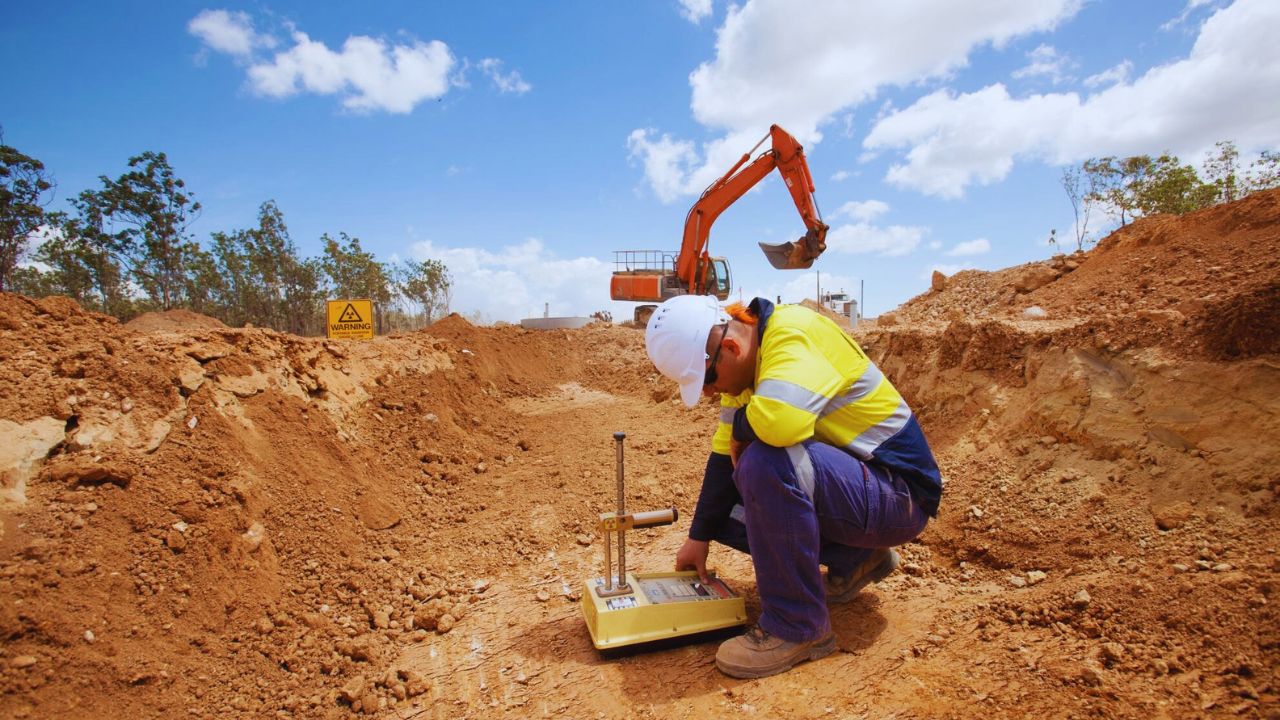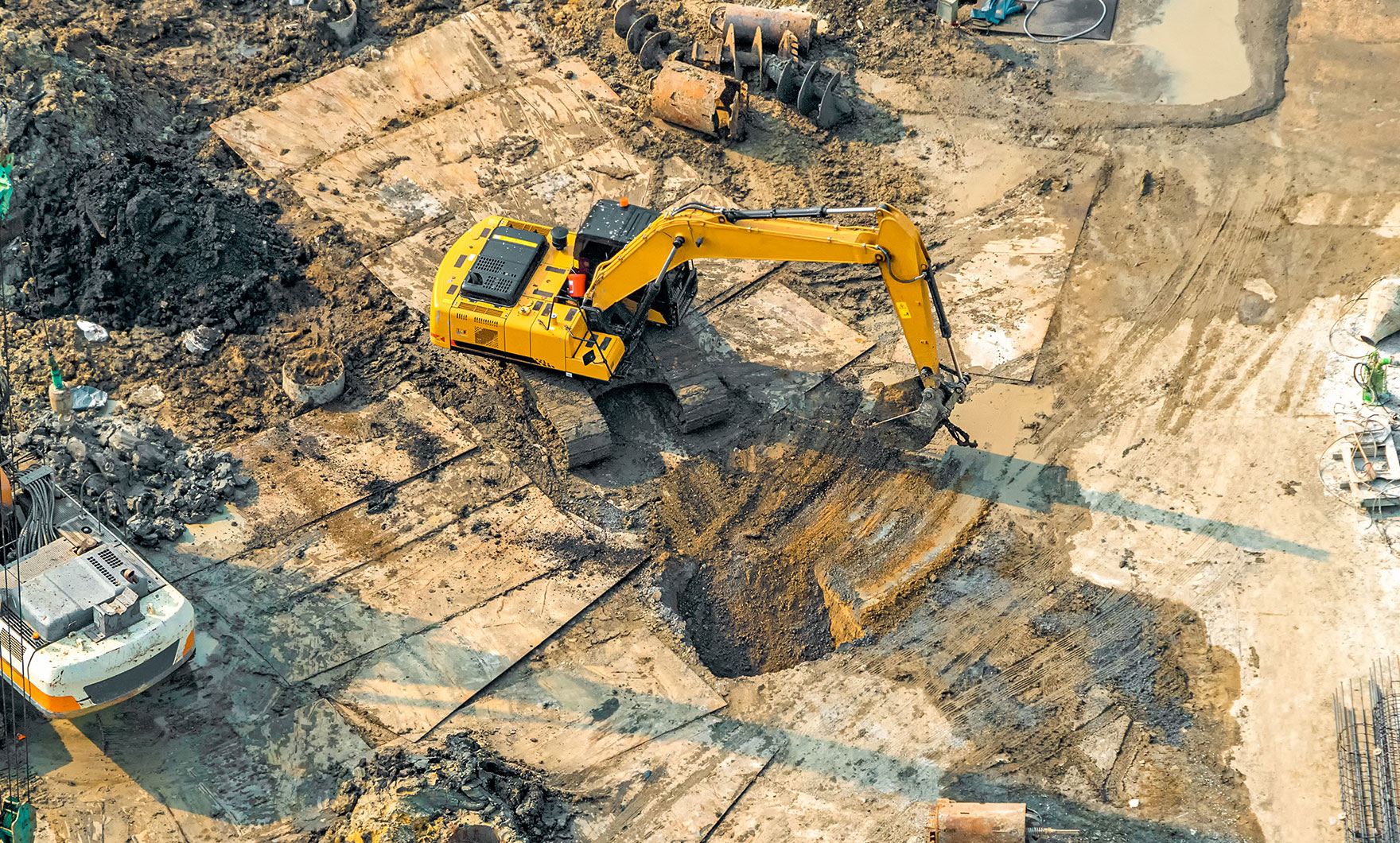Everything You Required to Find Out About Geotechnical Engineering for Your Following Project
Everything You Required to Find Out About Geotechnical Engineering for Your Following Project
Blog Article
Investigating the Interdisciplinary Nature of Geotechnical Engineering and Its Impact on Ground Enhancement and Foundation Layout
The interdisciplinary nature of geotechnical design plays a critical role in shaping innovative ground enhancement strategies and foundation layout techniques. By integrating insights from architectural, ecological, and geological disciplines, geotechnical designers are equipped to attend to complex soil behaviors and site-specific challenges. This collective method not only boosts the effectiveness of techniques such as dirt stablizing and dynamic compaction but also makes certain that jobs abide by sustainability principles. What ramifications does this interdisciplinary synergy have for future developments in the area, specifically in the context of emerging building and construction technologies?
Summary of Geotechnical Engineering
Geotechnical engineering is a crucial branch of civil engineering that focuses on the habits of earth materials and their interaction with structures. This technique incorporates the research study of rock, groundwater, and dirt, intending to comprehend their homes and exactly how they influence the performance of civil engineering jobs. Geotechnical engineers evaluate the mechanical and hydraulic behavior of these products to guarantee the security and security of frameworks such as buildings, bridges, and retaining wall surfaces.
The scope of geotechnical design includes website investigations, dirt tasting, and testing, along with evaluation of soil technicians and rock technicians. Designers utilize innovative methods to evaluate ground problems, recognize prospective threats, and design effective ground improvement options. This may include approaches such as soil stablizing, grouting, and making use of geosynthetics, which boost the toughness and resilience of the ground.
Furthermore, geotechnical engineering plays an important duty in structure style, establishing suitable foundation types based on dirt qualities and filling problems. By incorporating extensive screening and evaluation, geotechnical designers add considerably to the sustainability and strength of framework, ensuring that structures can stand up to functional and ecological anxieties with time.
Trick Interdisciplinary Relationships

Furthermore, environmental design plays a crucial role in examining the influence of geotechnical tasks on the bordering environment. This partnership is crucial for developing sustainable methods that lessen ecological destruction throughout excavation or ground renovation procedures.
In addition, the integration of geotechnical design with geology boosts the understanding of subsurface problems, facilitating more accurate website characterizations (geotechnical engineer description). This relationship help in hazard analysis, specifically in locations susceptible to landslides or seismic activity, thus informing risk reduction approaches
Last but not least, improvements in innovation have caused interdisciplinary partnership with data science and geoinformatics. These areas add to enhanced modeling and analysis techniques, permitting for a lot more exact predictions of soil actions under different conditions. Hence, the interconnectedness of these techniques enhances geotechnical engineering, advertising technology and effectiveness in foundation design and ground renovation.
Ground Enhancement Strategies
Ground enhancement techniques are important approaches employed to enhance the design buildings of soil, thereby boosting its load-bearing capacity and security. These methods are especially essential in locations where all-natural soil conditions are inadequate for sustaining structural tons or where ecological factors might compromise dirt stability.
Commonalities improvement techniques consist of dirt compaction, which enhances thickness and decreases void rooms, and grouting, which involves injecting products right into soil to fill up gaps and bind particles together - geotechnical engineer description. Other strategies consist of the installation of soil nails and supports, which give additional support, and the usage of geosynthetics to reinforce soil frameworks. Deep blending methods, such as soil-cement columns, can likewise significantly enhance the toughness and stiffness of weak soils
Furthermore, vibrant compaction and vibro-replacement strategies are typically used to enhance dirt buildings browse around here sitting. These approaches Get the facts can reduce issues associated with negotiation and liquefaction, specifically in seismic areas. By employing a combination of these innovative methods, geotechnical engineers can successfully resolve site-specific obstacles, guaranteeing that the foundation systems will perform effectively under prepared for loading problems, therefore adding to general job success.
Structure Design Factors To Consider
Reliable structure style considerations are important for the durability and stability of structures. A properly designed structure needs to effectively sustain the tons of the building while suiting dirt conditions, environmental variables, and possible modifications in time. Key variables consist of soil bearing capacity, settlement features, and groundwater conditions.
Comprehending the soil account with geotechnical investigations is essential, as it educates the choice of foundation kind-- be it shallow, deep, or specialized approaches such as pile foundations or floor covering foundations. The anticipated lots, including live, dead, and ecological loads, have to be precisely calculated to ensure the structure can resist possible failure devices, such as moving, rescinding, or extreme negotiation.
Additionally, considerations for frost deepness, seismic activity, and prospective soil liquefaction in seismic zones are crucial. In addition, drainage and dampness control should be incorporated into the foundation layout to reduce issues associated to hydrostatic pressure and soil disintegration.
Collaboration amongst architects, engineers, and geotechnical professionals is important to create go a detailed foundation layout that not only satisfies regulatory demands yet also makes sure the lasting performance and security of the framework. Ultimately, detailed planning and ingenious solutions are essential to address the complexities inherent in structure layout.
Study and Finest Practices

One noteworthy instance research study entails using deep dirt mixing in a skyscraper job in a seismic area. This method significantly improved the dirt's strength and security, enabling a much safer and extra efficient structure system (about geotechnical engineering). The task highlighted the significance of choosing ideal ground improvement techniques based upon site-specific problems, including soil type and loading needs
Another example is the application of vibrant compaction for boosting the bearing capacity of weak soils underneath a commercial center. This method effectively lowered negotiation concerns and enhanced total website performance, showing the efficiency of incorporating conventional engineering experiment modern technology.
Best practices originated from these situation researches stress the necessity of extensive website examinations, cooperation amongst multidisciplinary groups, and the unification of advanced modeling tools. By adopting these lessons, geotechnical engineers can optimize foundation designs and ground improvement techniques, ultimately resulting in much safer and much more sustainable building results.
Final Thought
In conclusion, the interdisciplinary nature of geotechnical design substantially enhances ground renovation and foundation layout. By incorporating principles from numerous engineering techniques, tailored methods are developed to attend to specific obstacles related to dirt homes and ecological effects.
The extent of geotechnical engineering includes website investigations, dirt tasting, and testing, as well as evaluation of dirt mechanics and rock auto mechanics. The relationship between geotechnical design and architectural engineering is especially critical, as the performance of frameworks is greatly influenced by soil habits and properties.Common ground enhancement approaches include soil compaction, which boosts thickness and reduces void spaces, and grouting, which includes infusing products right into dirt to fill voids and bind bits with each other. Various other techniques include the setup of soil nails and supports, which give added assistance, and the use of geosynthetics to strengthen dirt structures. A properly designed structure should properly support the lots of the structure while suiting dirt problems, ecological elements, and prospective modifications over time.
Report this page